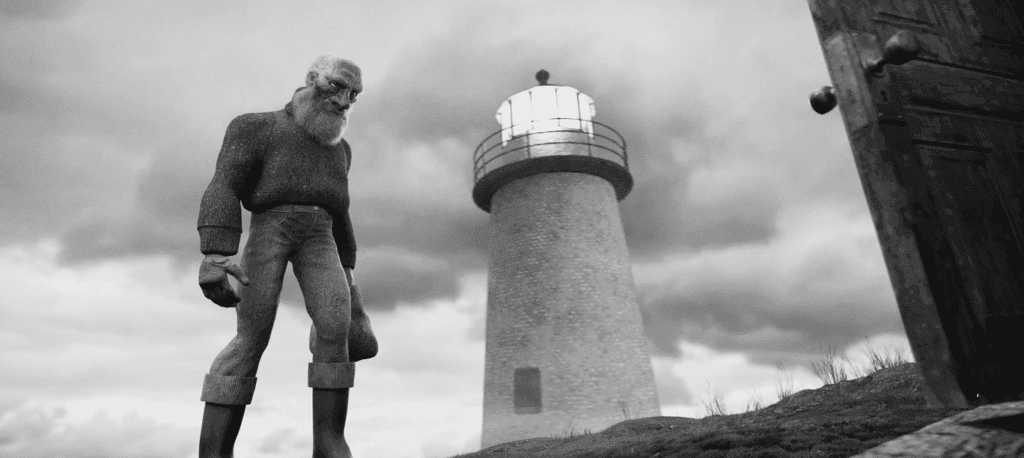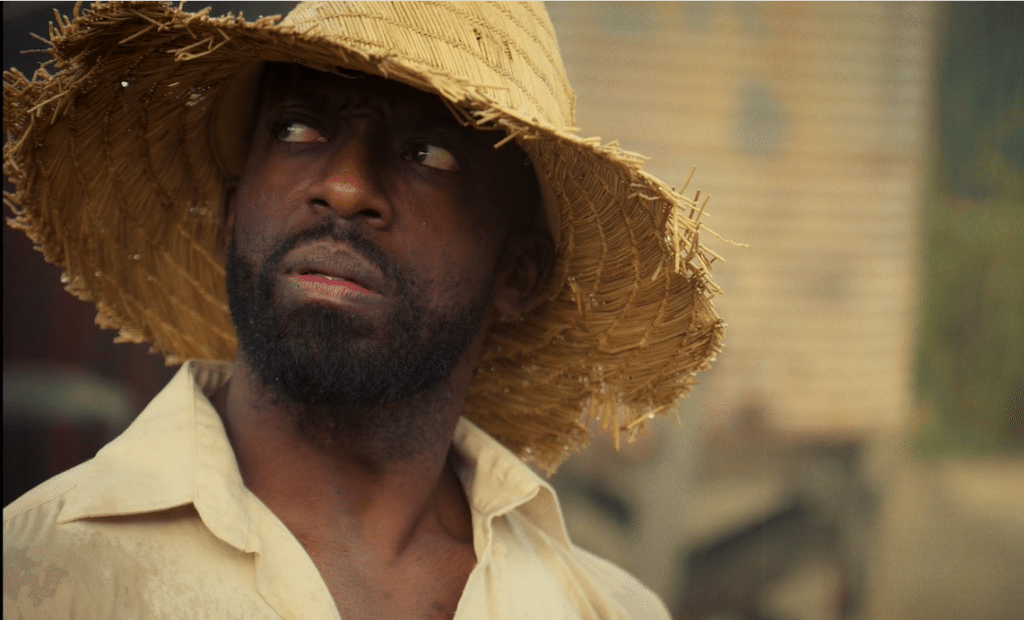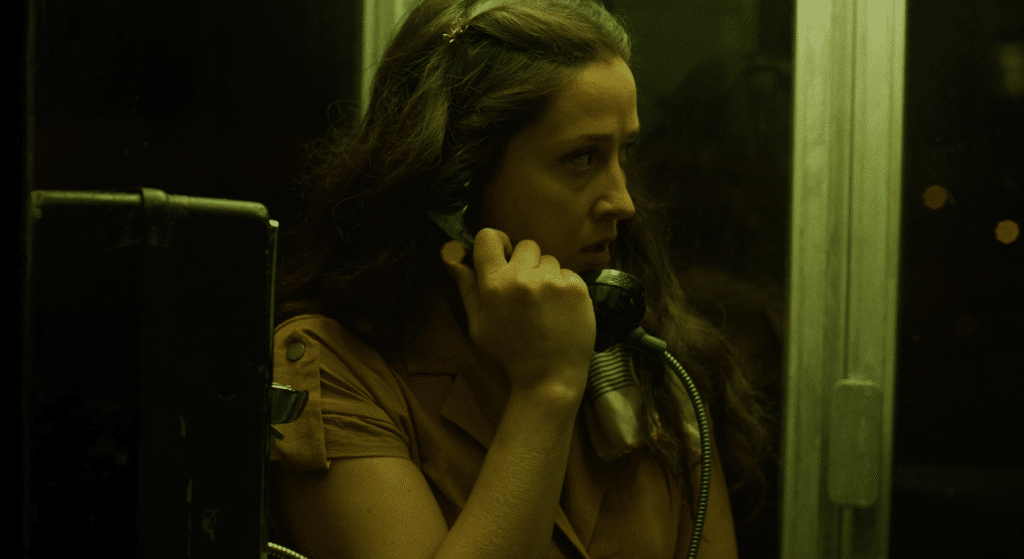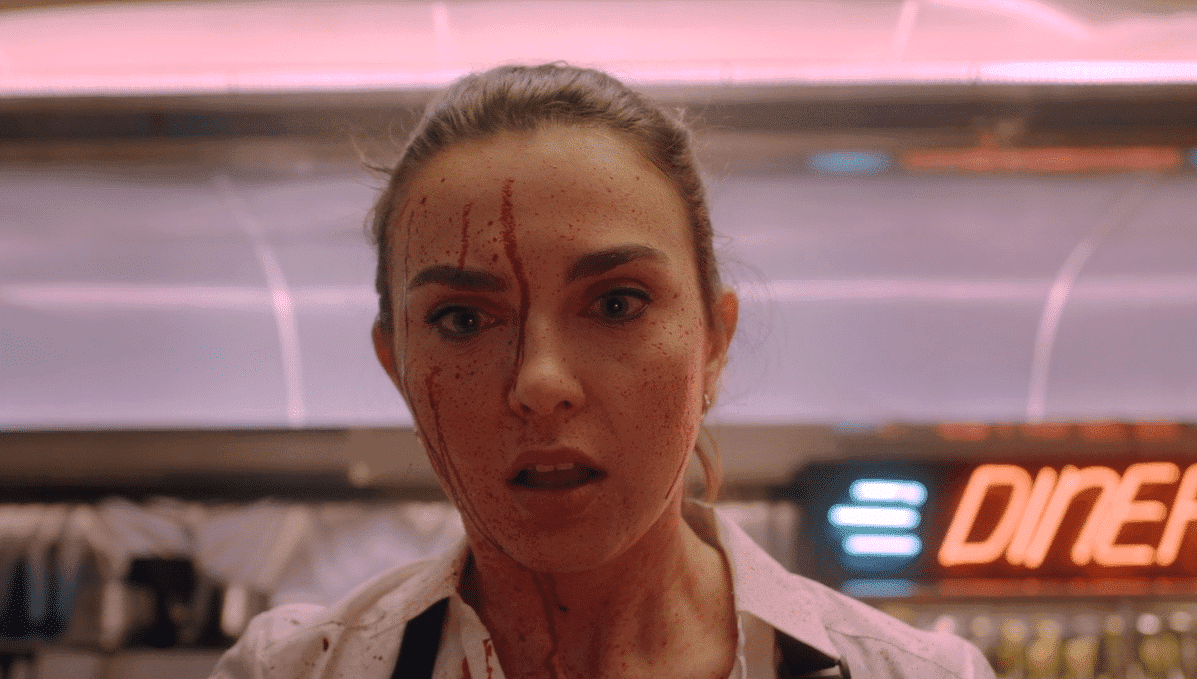
You don’t have to ask me twice. Warped Perspective covered a number of the National Film Festival for Talented Youth’s horror, sci-fi or otherwise left-field short films last year; not only did this prove to be a good call, but two of the short films featured made it onto my favourite short films of the year. It’s a real privilege to get asked to cover this year’s films, too. That the filmmakers involved are all under the age of twenty-four is quite something, and deserves – as ever – to be encouraged and supported. This year’s short film package is more extensive than last, but the range of styles and approaches is intact; the films range across surreal to scary, darkly comic to dark fairytales. With any luck, a few of these will make it onto some other festival schedules once the judging is done; I sincerely hope they do. As with anything, I have my favourites here, but without exception these films are all well made, knowledgeable and thought-provoking. And entertaining; let’s not forget that. For information on how you can see these films for yourselves, check out the information at the end of this post. So, without further ado, here’s a rundown of this year’s roster.
There are a number of animated shorts in this year’s ‘thrills and chills’ block, kicking off with Reaper: in the film, a feminine Death seems to have come for a girl, who we see lying prone on the outskirts of a farm. Or has She? The film offers a false lead or two before we finally see what’s going on here, with a flash of something else, something nightmarish, which establishes the ghoulish parameters of this place. This is no mean feat, given the film only has a few minutes to run.
With a fairly similar artistic style, Mileage concerns a journey too: a young woman, stranded on a rain-soaked night, hails a cab. As she counts her lucky stars, enjoying finally being in a warm, dry car, she watches the mileage ticking; as she does, she notices that something else is happening – to her. This brief treatise on time and ageing is surprisingly effective, conjuring a range of brief but weighty questions as it makes for an effective, dramatic conclusion. It’s nicely, neatly done.
And then there’s L’Abattu des Vents, a black and white film whose protagonist has the time-honoured nightmare job of manning a lighthouse; honestly, are there any lighthousemen who have a good time doing it? Think of the Eggers version of the same job role, and you’ll be close to this short film, albeit that our guy is completely alone and the solitude is leading him to some other strange places. The film looks wonderful, with a distinctive and evocative style of art plus just enough hints at some specifically nautical horrors to tantalise its viewers. It’s visually and atmospherically striking.
Finally, Unlucky Charms takes elements of nostalgia from some of the creature features of the 80s and renders it into something which looks absolutely great, as a bored store clerk decides to make good on what the TV ads promise by assembling an entire range of cereal box leprechaun figurines. This turns out to be a spectacularly bad call, taking our hapless clerk into a netherworld both twee and terrifying. It’s a lively, well-paced skit which calls on well-known horror tropes but weaves them into something engaging and fresh.

Aside from the animations, the narrative films encompass a great deal of variety, though coincidentally, the old adage ‘be careful what you wish for’ is often here, present and correct. Fitting that bill almost exactly is Cabbage, a film which feels like a cautionary fairy story, a warning about making bargains with strangers; indeed, remove the Disney gloss from the majority of fairy stories and they offer the same warning. Penniless farmers Abraham and Mabel are trying to eke out a living on their dry and dying farmstead; their miseries are compounded by a traumatic miscarriage, and their troubles look like they’re going nowhere. But when a man arrives at their door seeking shelter and food, they give it, though largely at Mabel’s insistence. He turns threatening; when he offers them their ‘greatest wish’, it feels more like menace than help. But then the rains come, and from outside, they hear a baby cry. It’s a sad, ominous story, balancing something very humane and engaging against its fantasy elements, and there are engaging performances here.
The Businessman is an odd film, though one which has clearly striven for that oddness; along the way (and it’s actually not the only film in this collection to do so) it calls into question the priorities we give ourselves, and particularly the emphasis on making money. Its 70s-seeming style seems to be pointing towards something horrifying, but instead it goes full weird, as a little girl encounters a guy in a suit, sat out on his own in the woods. He engages her in conversation, quickly getting to the point, asking her how she thinks she’s going to get by should she lose her economic support net, i.e. her parents and their proffered shelter and income. His solution is this: to recruit Lola to sell vintage fashion magazines on his behalf. Okay! This is a bizarre, possibly symbolic trip into: the weirdness of working life? Adulthood? It’s an appealing and actually, strangely unsettling film which hooks into your consciousness.

Nurture is another film with a defiantly ambiguous message – though it channels more horror archetypes along the way with its remote, tattered house and its silent, remorseful inhabitants. It looms indistinctly out of a black-and-white gloom, offering a partial, if clearly dysfunctional view of family life. There’s disarray and danger everywhere: as a man arrives back to the house, there’s an unattended hob, threatening fire; he deals with it, but he seems resentful, and the care of his elderly mother is pivotal in this. Whilst some more explication would have drawn these visual and atmospheric elements together more fully, it no doubt does what it sets out to do: it suggests that love and care can be, in their own ways, a horror.
Latchkey is also more recognisably ‘horror’ in some ways although, cleverly, it asks questions about what makes people afraid. We meet Connor, older brother to Henry; Henry is unwell and Connor is away out of the door, though his younger sibling protests that the house is ‘haunted’, not wanting to be left alone. Later, it seems that his fears are not completely unfounded, as there’s a disturbance in the house, and Connor gets called back to investigate. The film uses gaps in time and place very effectively, generating tension well whilst also adding in a hint of a question: is there a more earthly cause for all this, and what does this say about the people harbouring that fear? It’s a thoughtful and interesting film, a great calling card for how to structure and unfold a brief story.
There’s Something About Ryan has all the hallmarks of a festival favourite: it knows its stuff, it takes an element of vampire folklore and plays it for gruesome laughs, though not without pointing to a family’s rather grim fate. Dave is a pretty feckless dad; when his son, Ryan, develops Type 1 Diabetes, he just can’t bring himself to help with the insulin shots, claiming it makes him squeamish. His long-suffering wife has to deal with it. And yet, he’s also protective of his fecklessness, dodging well-meaning attempts by friends to recommend good doctors or similar. One night, when Ryan cracks and does something injurious to his health, Dave decides he has to step up: his efforts at doing that, as he insists on driving them both to the hospital, propel Ryan into a much more serious condition, shall we say. Strong and simply delineated characters give this film enough pep and humour to make its dark humour work well; horror infects this father/son relationship, but it’s hard not to feel for Dave, whose best efforts at being a father get him – well, this…

In RING, no, not that one, a simple moment’s everyday predicament turns into a nicely-realised nightmare; again, as with the film above, just enough script and a decent performance from the key character makes for an engaging little horror story. A woman (and we can guess that this is in the 80s, or thereabouts) rings the doorbell at her boyfriend’s place: no answer. Irritated, she heads to a nearby phone booth to call him, wanting to chastise him as well as to get let in. They speak briefly, but then there’s a callback: who is this? Is this some kind of joke? Or something else? There are the right number of twists here to keep this ticking along nicely, with great use of the camera to generate tension and disorientation. It’s well made and well handled.
Photocopy takes that age-old figure of the uncanny – the doppelganger – and gives it a modern overhaul. When better than now? We all live with different versions of ourselves, thanks to social media and all the inducements which it brings. In this story, photographer Collin is startled to glimpse what looks like an exact replica of himself, wandering the same New York streets; it seems other people are seeing the same thing, as we find out when someone angrily challenges Collin for ‘taking his picture’. There are shades of Dostoevsky’s story The Double here, as there’s some of the same professional resentment, isolation and frustration which trigger the appearance of the ‘better’ Golyadkin in that narrative. However, unlike the traditional doppelganger narrative arc, Collin finds he may not simply be doomed by his other self being out there. It’s in intriguing spin on a well-established, if out-of-favour, horror archetype.

This brings us to my three personal favourites from this year’s package.
In Those Who Run, winning really is everything: as we see in the opening scene, as locker room nerves give way to a fateful decision by Sophie, who is about to race against an old rival. This is a cautionary tale where the horror escalates quickly and brutally: Sophie wins the race, but at great potential cost. Her subsequent actions prompt an array of horrific deeds, with sharp, brutal, clever twists. There’s not a wasted beat. Something else which works here: the girls authentically look fit and as if they have been training: the worn training shoes, the sweat. It helps to lend the film a very real feel, which filters down through its moments of calculating desperation. It’s pretty nasty, too. Excellent work.

Things Could Be Better has something of a Cody Calahan vibe, with a similar quick pace, a charming, choppy story and the same deft twists and turns. The characterisation here is great, too, with strong performances across the board, but with special mention to Rachel Gold as Jesse. Jesse has recently made a decision: she’s going to quit her dead-end job at the diner and go and realise her dreams as a singer! Great, expect her last day is turning out to be rather more eventful than she wanted. The opening moments of the film reveal that she’s killed her boss, and that’s just the start of this likeable, well-pitched horror comedy. It’s a superb calling card, but at the heart of it all it’s asking that same old question: what are you willing to do in order to get what you want? The answers given here are a little extreme, but you can’t help but feel for Jesse – dangerous, desperate but sympathetic Jesse.

With the best will in the world, it’s harder to summarise my personal pick of the bunch, Taming a Seahorse. It tells a story, but in an unorthodox way: the real story filters through some time after watching, because this is not a film which openly addresses its key themes and topics. To the film’s immense credit, it sticks with you. In our second cab journey of the short film package, we meet Solomon, a Ghanaian cab driver working the night shift in London. A great range of interior shots give us a clear sense of a taxi ride at night, an interior space amongst unfamiliar spaces. Solomon picks up a fare: he meets a young man called Nathan, and they talk, naturalistically enough, but more and more information comes out as the minutes tick away.
There is little sense of where this conversation is going; by this point, it feels clear somehow that the most obvious routes through the narrative are not going to be taken, but all the same, there’s a growing sense of foreboding here – that Nathan is not quite what he seems. But then, this is a film all about concealment: Solomon listens to spiritual radio programmes when he’s on his own, but hides the trappings of religious faith when his fare appears, changing the station too. Nathan has ‘been on a date’, but his language grows more sinister when he appraises the girl in question. The film’s title is openly addressed in the script, relating to a mention in the Browning poem My Last Duchess, which has its own sinister speaker, a man who hides his deeds in plain sight. What hides in plain sight as we go about our daily lives? This is a textured, tense story which dodges the conventional to nonetheless make a series of thought-provoking points. It’s clever and effective.

People in the Seattle area can attend the in-person screening of this Thrills & Chills program block on Saturday, April 29th, 8:30pm PT or Uneasy Street films Sunday, April 30th, 3pm PT — both at SIFF Cinema Uptown, and anyone can stream it online from those premiere dates through May 7th. Virtual-only passes are available, and grant viewers access to the whole festival catalogue.
